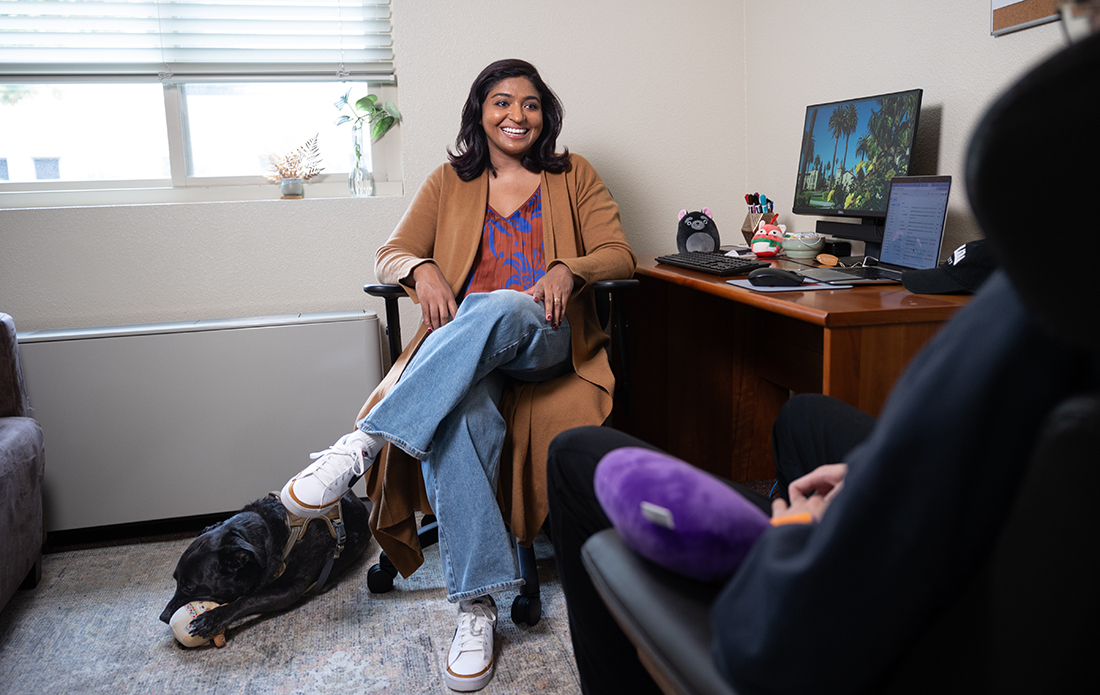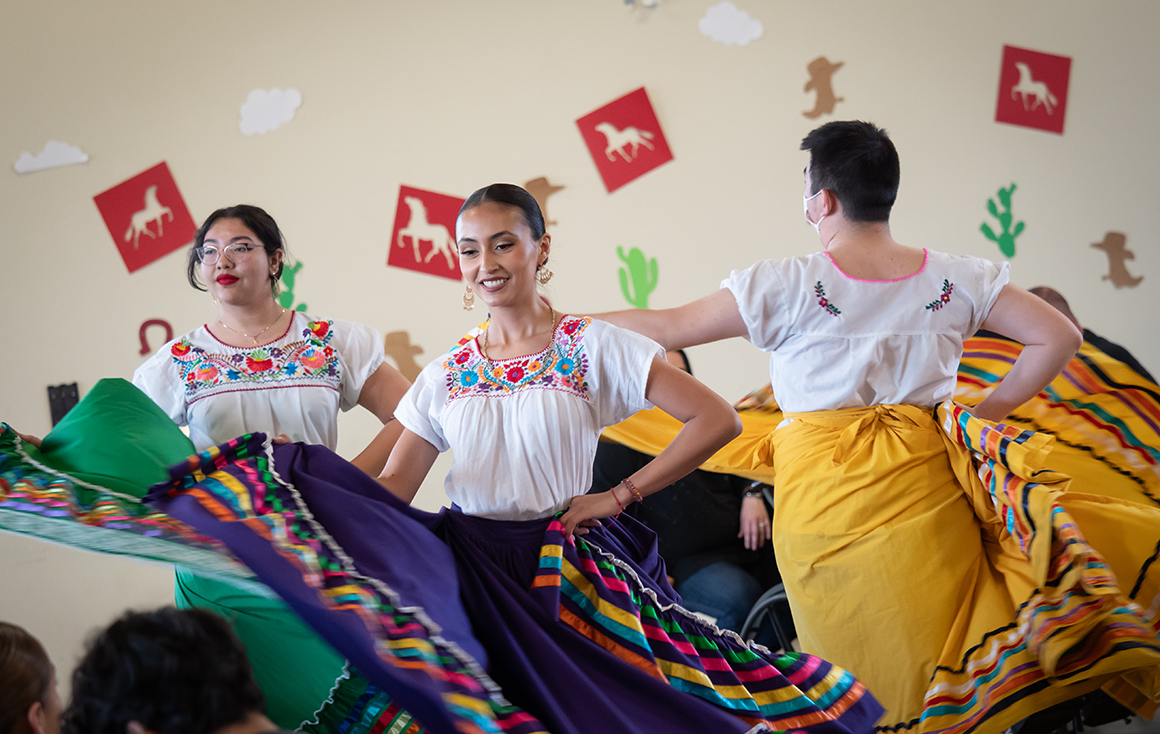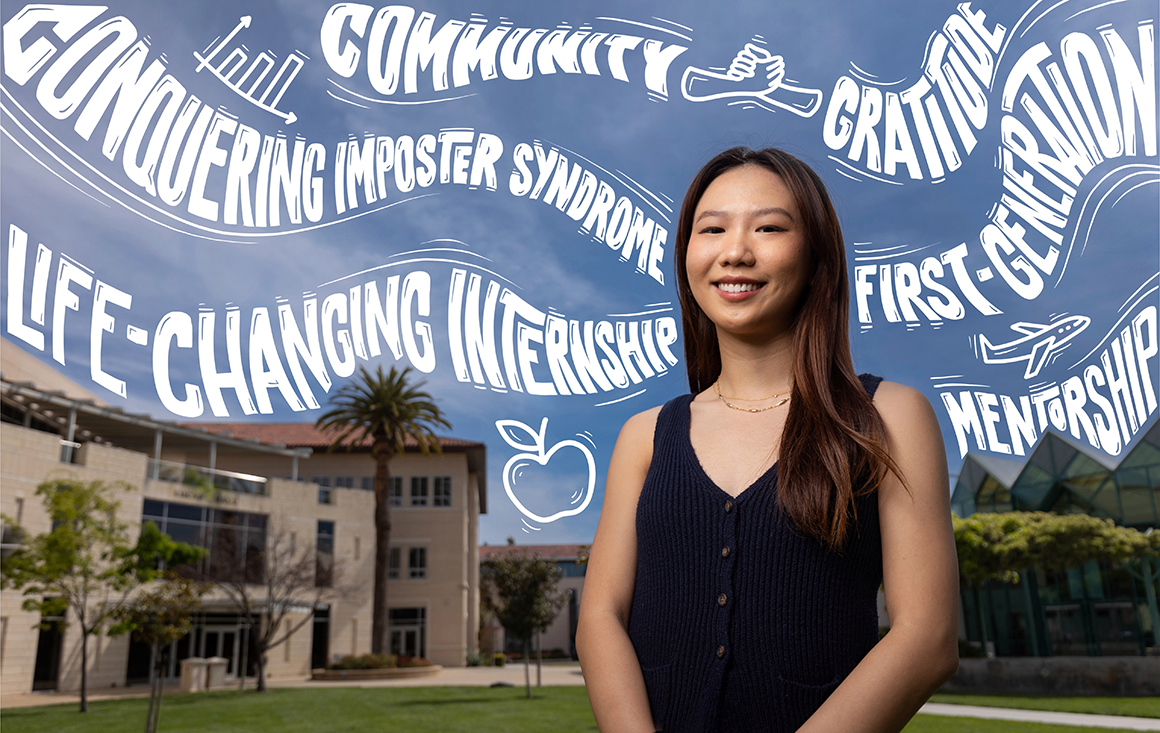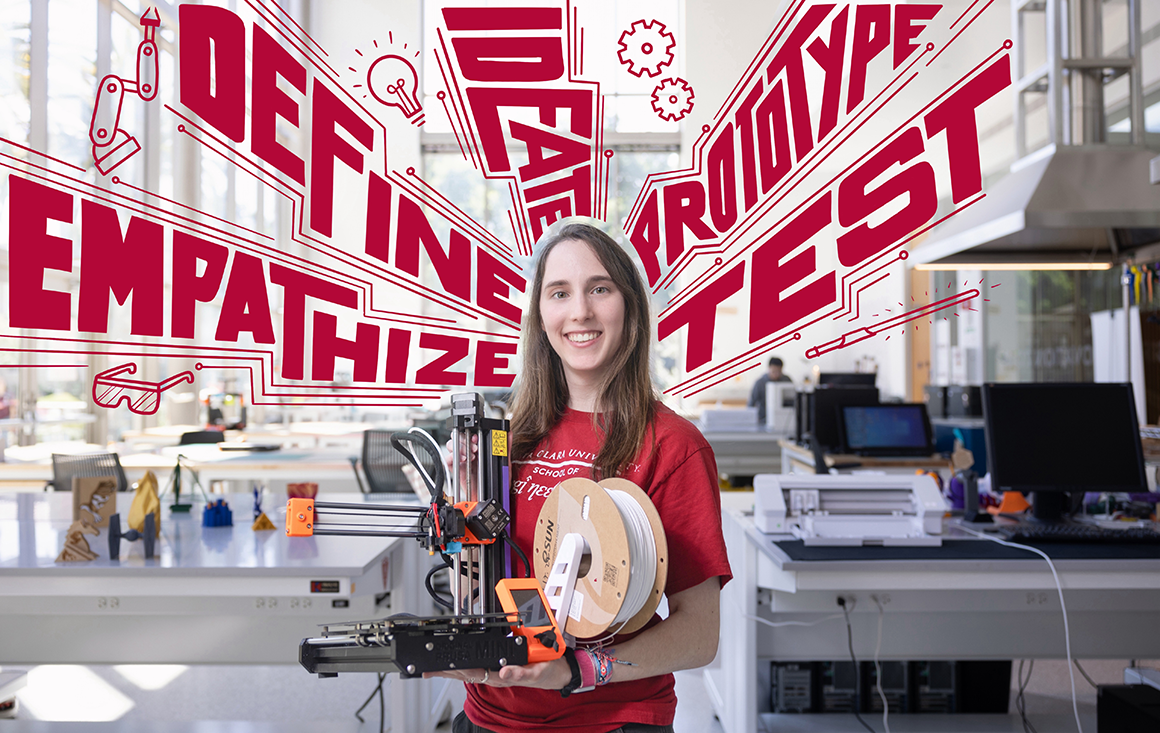Opening As Many Doors As Possible

Every day, students living in McLaughlin-Walsh Residence Hall walk by Melba Mathew’s first-floor office, conveniently tucked into an alcove right beside two vending machines. Her location is no accident: a quick stop for snacks, and students can’t help but notice adjacent signs on a door inviting them to counseling services offered inside. Mathew ’12 is one of four Therapists in Residence living and working in residence halls at Santa Clara University.
The innovative model of care was introduced at SCU in 2022 and is now part of the new “Initiative for Student Well-Being,” supported by a lead gift from Taube Philanthropies. “We are learning, adapting, and modifying as we go,” says Heather Dumas-Dyer, associate vice provost for student health, counseling and well-being, about the new program. “We think it’s a future trend for on-campus living.”
But Santa Clara’s commitment to caring for the whole person doesn’t end there. In the last few years, Counseling and Psychological Services (CAPS) has expanded its services with a greater number of diverse hires, 24/7 virtual therapy options, new student therapy groups, private on-campus wellness spaces, and more. The goal? To minimize wait times and other barriers to treatment and preventative care at a time when students are too often exceeding their ability to cope.
“Often our society sees mental health as focused on reaction and recovery,” says Bryan Nguyen, M.A. ’16, assistant director of the Therapists in Residence program and the facilitator of the Stronger Together trauma therapy group. “But, there’s a whole spectrum of mental health care, and that includes wellness, which is proactive. It means a lot when students ask us how to maintain positive self-esteem or how to promote ongoing mindfulness. A lot of CAPS’s growth is looking at prevention, education, and destigmatization where we can stay ahead of the game.”
The struggle is real—and different for everyone
College is hard. There’s no question about it. But living alongside potential patients is a game changer for the in-house therapists who have become attuned to the ebbs and flows of the school year and how it can impact mental health.
“When they first arrive, students are getting used to college, and as part of the adjustment, they may also be struggling with issues like not getting enough sleep,” says Mathew. “Or they may have social anxiety that comes with building confidence, making new friends, academic pressures, and wondering if college or Santa Clara is the right fit. It can be overwhelming.”
Therapist in Residence Kristin Tappan ’11, M.A. ’17, who lives at University Villas among almost 500 mostly junior and senior students, including many international students, encounters a different set of anxieties.
“There’s a greater pressure around what life is supposed to be like after college; there’s this intensity that the rat race has really begun,” Tappan says. “They’re comparing themselves to where their counterparts are.” With that in mind, she teaches them coping strategies, about resilience, and reminds them that they’re not the only people feeling this way.
For many first-generation and international students, she says, mental health is still often considered a taboo subject. Reducing that stigma and letting students know she understands what they are going through is a powerful message.
“I think there’s greater buy-in when they find out that I went here for undergrad and grad school, too—that I’ve walked these halls and had the same experiences, and lived to tell the tale. And now I’m sitting on the other side.”
Both Tappan and Mathew also have a trained therapy dog on site, and their warm presence and wagging tails help to break the ice for apprehensive students, says Mathew. “Especially when there’s some anxiety, having something to touch and make eye contact with instead of me helps bring down some barriers,” she explains.
To accommodate students’ schedules, the Therapists in Residence say their 50-minute therapy sessions, between noon and 8 p.m., Monday through Friday, usually take place in their on-site offices, or via Zoom, if that’s more convenient. Walk-in consultation appointments are also available. SCU Therapist in Residence Kristin Tappan '11, M.A. '17, in the courtyard of University Villas. Photo by Miguel Ozuna.
On rainy days, on sunny days
Outside the residence halls, that feeling of solidarity can be enhanced in CAPS’s therapy group sessions focused on issues ranging from BIPOC empowerment to body liberation and neurodivergence. There, students can gather privately with peers experiencing similar struggles.
“In groups, the students can be with other people and just sit and listen and still feel supported,” says Mathew. “They can also get a little bit more perspective and understand that, ‘OK, I’m not alone in this.’”
For Nguyen, he hopes that his trauma therapy group, Stronger Together, can demonstrate that no matter what difficulties students face, these struggles affect the body and mind the same way.
“Whether it’s believing that your value is in performing a certain way, or growing up in a home that didn’t give someone emotional space to express themselves, these ‘little T’ traumas teach us to hide, repress, and be ashamed of our humanity—just as much as ‘big T’ traumas like war, assault, or a car accident.”
By creating a safe space where students can be vulnerable and put words to their feelings, he believes they’ll be more adept at using tools like mindfulness and self-compassion to manage these traumas. For example, if a student is preparing for a test, the stress might bring up larger anxieties about self-worth or expectations, leading to a panic response. However, practicing mindfulness can help someone return to the present moment and realize, ‘Oh, I probably need to study a bit more.’
“This group is designed to give students the tools to retrain their brains, reinforcing the neural pathways that are healthy and functional,” Nguyen explains.
But these groups aren’t just about brain hacks and mental health techniques. For Clarise Ballesteros, facilitating the SCQ @ SCU group for LGBTQ+ students creates a dedicated space for affirmation, celebration, and exploration—like an island in stormy seas.
“Students who identify as LGBTQ+ are constantly looking around for safety signals, and it’s exhausting,” she says, citing higher rates of social isolation, depression, and suicidality experienced by LGBTQ+ youth. “This group can create a community of people that are there for you on the rainy days and the sunny days—you can bring your whole self and know you’ll be seen as valid.”
This group has already become a smashing success. During the first quarter it was offered, the group filled so quickly that Ballesteros decided to add a second section the following quarter. She’s also received requests for more specific LGBTQ+ therapy groups, like ones focused on the needs of LGBTQ+ graduate students or transmasculine students, which she says speaks to the diversity of Santa Clara’s LGBTQ+ community—a community she feels deeply proud to accompany as a therapist.
“I’m here because of the students at Santa Clara. They fought for the creation of these new roles and programs,” she says. “I see each program as a door, and right now, CAPS is trying to open as many doors as possible. All that’s left is for students to decide which door is right for them to walk through.”
Counseling and Psychological Services, or CAPS, is a team of licensed therapists, graduate-level psychological trainees, and mental health professionals dedicated to promoting SCU students’ well-being through short-term therapy, crisis support, groups, workshops, and more.
Learn more about Therapists in Residence and therapy groups at Santa Clara.


